Were there technologies before photodiodes/phototransistors or similar semiconductors, which could be used to start or stop machinery based on the amount (or presence/absence) of light falling on them?
7 Answers
Photoresistors were the predecessors of photodiodes.

Instead of acting as current source they were light dependent resistors (LDRs). Their main disadvantage is that they react very slowly to light changes.
- 819
- 2
- 8
- 18
-
5An important property of an LDR is the color sensitivity that resembles the human eye more than a photodiode does. – jippie Sep 08 '13 at 10:09
-
@jippie: that's true for many common photodiodes, but recent photodiodes/transistors can be found with an eye sensitivity curve. – radagast Sep 18 '13 at 11:05
Not really used in a similar way for stopping machines like in your question, but before there were phototransistors/diodes we had photomultiplier tubes.
Under influence of a high voltage a single photon that collides with the light sensitive cathode will release several electrons. Then these electrons are attracted to the anode, on their way there collide couple times again, releasing even more electrons. Anyways, the wiki article linked is much better in explaining the mechanics.
- 33,033
- 16
- 93
- 160
-
I only included "to start or stop machinery" to indicate that it has to be used in control systems, so film used in photography, or just slices of apple (both of which change their color based on incoming light, but have no practical use in a control system as a sensor) should not become valid answers. – vsz Sep 08 '13 at 16:40
A photomultiplier tube is one such device. They are still used in some applications and as per a photodiode comparison with photomultipliers looking at the some disadvantages of a photodiode some areas where a photomultiplier has advantages:
- Larger detection area
- Has internal gain
- Much higher sensitivity
- Photon counting possible without special cooling and interfacing electronics
- Response time faster for many designs
While no longer typically used for that purpose the articles states them as being the first electric eye devices, being used to measure interruptions in beams of light. Here's an image from the above Wikipedia article of what one looks like:

- 17,131
- 37
- 56
- 91
-
PM tubes are still very much used for low photon count events where you need photon counting. Just search on Super kamiokande to see one extreme example used in solar neutrino detection. – placeholder Sep 08 '13 at 11:15
Simpler than the photomultiplier tube is the basic vacuum tube photodiode:

The curved plate is the photocathode, and the wire post in the center is the anode. Photons knock electrons free from the surfaces of both elements, but since the area of the cathode is so much larger than the anode, there's a net flow of them from the cathode to the anode — which can also be thought of as a "positive current" from anode to cathode.
Albert Einstein got his Nobel Prize (1921) for explaining how this works (paper published in 1905).
- 168,369
- 17
- 228
- 393
-
-
It's more of a "photovalve" than what would normally be understood by "photodiode", ie a silicon junction device. – pjc50 Sep 08 '13 at 15:08
-
1pjc50: Two-element vacuum tubes (or "valves") are called diodes, too. The term isn't limited to solid-state devices. – Dave Tweed Sep 08 '13 at 16:01
-
@Dave Tweed: The OP obviously meant other devices than semiconductor photo diodes because he wrote "... or similar semiconductors" – Curd Sep 09 '13 at 08:35
-
2@pjc50: In fact, semiconductor diodes were named after the two-terminal vacuum tubes that pre-dated them. Two terminal: Diode. Three terminal: Triode. Five terminal: Pentode. These names were around before newfangled types of diodes came along that were made from semiconductors. – Olin Lathrop Sep 09 '13 at 12:51
The first electrical light sensors were selenium cells. Selenium was used for resistances at the receiving station on the transatlantic telegraph cable in the 1860s, and it was noticed that it gave erratic results in daylight. Selenium can generate a small photovoltaic current so it was used in pre-war lightmeters and (I think) "Magic Eye" demonstrations at the London Science Museum...
It was in 1873 Willoughby Smith discovered that the electrical resistance of grey selenium was dependent on the ambient light. The first commercial products were developed by Werner Siemens in the mid-1870s.
- 151
- 3
The very first image sensors were vidicon tubes, which are a vacuum tube technology. These are made from low work function metals in a photocathode. These devices are still indirectly referenced in modern sensor designs. When someone says they have 1/2" sensor (or 1/3" or 1/3.4" etc) they are comparing the image diagonal to a vidicon tube diameter which for a 1" external diameter was roughly a 16 mm imaging area. But that isn't a "standard" either.
- 29,982
- 10
- 63
- 110
-
2Vidicons were quite late; orthicons were earlier as was the "Farnsworth Image Dissector" which was so insensitive that its further development led to the photomultiplier. – Sep 08 '13 at 11:32